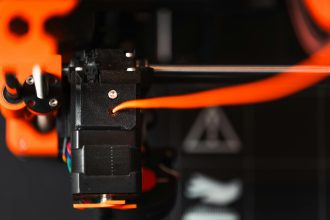egg-separation-techniques
Egg Separation Techniques: 5 Easy Ways for Perfect Results!
Ever found yourself needing just the egg white for a fluffy meringue or only the yolk for a rich hollandaise? Mastering egg separation techniques is a fundamental skill in the kitchen, yet it can often feel like a delicate dance between success and a messy, broken yolk disaster. Whether you’re a seasoned baker or a curious home cook, achieving perfectly separated eggs doesn’t have to be a challenge.
This guide will demystify the process, offering foolproof methods to ensure you get pristine whites and intact yolks every single time. Get ready to elevate your culinary creations with confidence!
Why Master Egg Separation Techniques?
Separating eggs isn’t just a fancy chef’s trick; it’s a crucial step for many recipes. Egg whites, when free from any yolk, can be whipped into incredible, stable foams for meringues, soufflés, and light-as-air cakes. The slightest trace of fat from the yolk can prevent them from reaching their full volume.
Conversely, egg yolks provide richness, emulsification, and flavor to dishes like custards, sauces, and pasta dough. Keeping them separate ensures the desired texture and consistency for your culinary masterpieces. Understanding these distinct roles highlights the importance of effective egg separation.
Foolproof Egg Separation Techniques You Need to Know
Forget the frustration! Here are five reliable methods to achieve flawless egg separation, from classic approaches to clever hacks.
The Classic Shell-to-Shell Method
This is perhaps the most traditional technique, often passed down through generations. It relies on gently cracking the egg and using the shell halves to transfer the yolk back and forth, allowing the white to drip away.
- Gently tap the egg against a flat surface (not an edge) to create a clean crack around the middle.
- Carefully split the egg in half, holding the two shell pieces over a bowl.
- Pass the yolk from one shell half to the other, allowing the egg white to fall into the bowl below.
- Repeat until all the white has separated from the yolk.
Pros: Simple, requires no special tools. Cons: Can be messy, higher risk of yolk breakage if not careful, especially with fragile shells.
The Clean Hand Approach
For those who aren’t afraid to get a little hands-on, this method is surprisingly efficient and offers excellent control. It’s often favored by professional chefs for its speed and reliability.
- Crack the egg into a clean, shallow bowl.
- Wash your hands thoroughly and ensure they are completely dry.
- Gently scoop the yolk up with your fingers, letting the white slip through them back into the bowl.
- Transfer the yolk to a separate bowl.
Pros: Fast, very effective, good for handling multiple eggs quickly. Cons: Can feel a bit messy, requires clean, dry hands.
The Clever Water Bottle Trick
This ingenious method is both fun and incredibly effective, especially for beginners. It uses suction to effortlessly lift the yolk away from the white.
- Crack an egg into a clean, shallow bowl, ensuring the yolk remains intact.
- Grab an empty, clean plastic water bottle.
- Gently squeeze the bottle to expel some air, then place its opening directly over the egg yolk.
- Release your grip on the bottle; the suction will draw the yolk up into the bottle.
- Squeeze the bottle again over a separate bowl to release the yolk.
Pros: Easy, clean, minimal risk of yolk breakage, quite impressive! Cons: Requires a clean, empty plastic bottle.
Dedicated Egg Separators
If you frequently separate eggs, investing in a specialized tool can make the process even quicker and more convenient. These gadgets are designed to catch the yolk while allowing the white to drain through.
- Place the egg separator over a bowl.
- Crack the egg directly into the separator’s cup.
- The white will flow through the slots or holes, leaving the yolk behind.
Pros: Very easy, mess-free, consistent results. Cons: Requires purchasing a specific tool, takes up drawer space.
Pro Tips for Flawless Egg Separation
Beyond the techniques, a few key practices can significantly improve your success rate when separating eggs.
- Use Cold Eggs: Eggs are easiest to separate when they are cold, straight from the refrigerator. The yolk membrane is firmer and less likely to break.
- Freshness Matters: Fresher eggs tend to have tighter, more viscous whites that cling less to the yolk, making separation simpler. Older eggs have runnier whites that are harder to isolate.
- Separate One by One: Always separate eggs into a small, separate bowl first. If a yolk breaks, it won’t contaminate an entire batch of already separated whites.
- Cleanliness is Key: Ensure all your bowls, hands, and tools are completely free of grease or oil. Even a tiny speck of fat can prevent egg whites from whipping properly.
Creative Uses for Separated Eggs
Now that you’re an expert in egg separation, what do you do with those pristine whites and rich yolks? The possibilities are endless!
Egg Whites:
Perfect for light, airy dishes and binding agents. For more on the science behind eggs, visit The Exploratorium’s Egg Science section.
- Meringues: Classic desserts, pie toppings, or light cookies.
- Soufflés: Both sweet and savory varieties.
- Angel Food Cake: The ultimate light and airy cake.
- Royal Icing: For decorating cookies and cakes.
- Egg White Omelets/Scrambles: A lighter breakfast option.
Egg Yolks:
Ideal for adding richness, color, and emulsification to dishes. For a wealth of ideas on using up separated eggs, check out Food Network’s tips for leftovers.
- Custards & Crèmes Brûlée: Rich, creamy desserts.
- Hollandaise & Mayonnaise: Classic emulsified sauces.
- Pastry Cream: A staple filling for tarts and éclairs.
- Pasta Dough: Adds richness and a beautiful yellow hue.
- Lemon Curd: Tangy and luxurious spread.
Troubleshooting Common Egg Separation Hurdles
Even with the best techniques, sometimes things go awry. Here’s how to handle common issues.
What if the Yolk Breaks?
If a tiny bit of yolk gets into your egg whites, it’s best to set those whites aside for a different purpose (like an omelet or scrambled eggs) rather than trying to whip them for meringue. The fat will prevent them from foaming properly. You can try to carefully scoop out the yolk piece with a spoon or a piece of eggshell, but sometimes it’s better to just start fresh if you need perfect whites.
Getting Shell Bits in Your Egg?
A common trick is to use a larger piece of the eggshell itself to scoop out smaller fragments. The shell is attracted to other shell pieces, making it surprisingly effective. Alternatively, a clean, damp finger can also carefully pick out errant shell pieces.
Frequently Asked Questions About Egg Separation
Q: Do I need to use fresh eggs for separation?
A: While not strictly necessary, fresh eggs are generally easier to separate because their whites are thicker and cling less to the yolk. Older eggs have runnier whites, which can make the process a bit more challenging.
Q: Can I separate eggs ahead of time?
A: Yes, you can! Store separated egg whites in an airtight container in the refrigerator for up to 2-4 days. Egg yolks should be covered with a small amount of water (to prevent drying and skin formation), or tightly wrapped and refrigerated for 1-2 days. Drain the water before use.
Mastering egg separation techniques is a valuable skill that opens up a world of culinary possibilities. From the simple elegance of the shell method to the cleverness of the bottle trick, there’s a technique for every cook and every kitchen. Remember to use cold, fresh eggs, and always separate them one by one to ensure success. With these tips and tricks, you’re now equipped to tackle any recipe requiring perfectly separated eggs with confidence and ease. Go ahead, experiment with these methods and unlock new culinary possibilities!
Unlock the secrets to flawless egg separation with 5 easy, foolproof techniques. From classic methods to clever hacks, get perfect whites and yolks every time for your baking and cooking adventures.
perfectly separated egg whites and yolks, egg separation techniques, hand separating egg, water bottle egg separation, egg separator tool, baking ingredients, culinary eggs
Featured image provided by Pexels — photo by Pavel Danilyuk










